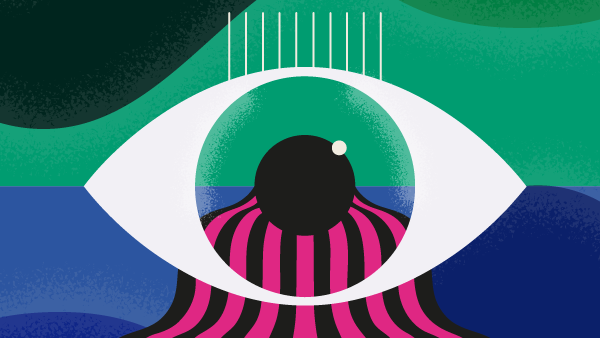You are viewing 1 of your 3 articles before login/registration is required
Opening Doors
How eye care professionals can improve the experience of autistic patients
Autism is a lifelong developmental disability that affects how people communicate and interact with the world. Around 45 percent of autistic people also have a learning disability. From an eye care perspective, autistic patients are more likely to have refractive errors with an astigmatic component and strabismus, as well as poor accommodative function.
Autistic patients may also have difficulty processing everyday sensory information – such as lights, sounds, tastes and smells – and can be over- or under-sensitive to such stimuli, making it difficult to access eye care services. The Equality Act 2010 requires public sector organizations to make reasonable adjustments to ensure that services are accessible to disabled people. The types of reasonable adjustment can vary from person to person, so it’s important to work with your individual autistic patients and/or their parents or carers to identify what is best for them.
Typically, this collaborative effort might include offering the patients a pre-visit to the practice so that they can familiarize themselves with the setting and the staff members they’re likely to encounter. In addition, offering an appointment at a quieter time of day – and if possible giving them a quiet place to wait, relatively free from too much external stimuli – can be beneficial. Many autistic people find uncertainty stressful; if there are long waits, it can be helpful to keep them informed about any potential delays or reschedule appointments.
During the sight test itself, be aware of any spoken or non-verbal signs that may suggest the patient is becoming dysregulated by the environment. If patients are exhibiting regulating strategies; for example, stimming (using self-stimulatory behaviors, such as repetitive movement or sounds, to help manage their emotions), try not to stop this behavior. Instead encourage patients beforehand to bring in anything they find calming, such as fidget toys or other relaxation aids.
If the patient becomes dysregulated during the test, they may experience meltdowns. Meltdowns are usually quite easy to spot, with the loss of control being expressed either verbally (for example, screaming or crying) or physically (for example, kicking or biting). Alternatively, patients may “shutdown,” which is a more muted response to extreme stress or an overload of sensory information than a meltdown. When an autistic patient goes into shutdown mode, they will become increasingly quiet and non-responsive. Though these two reactions present very differently, both can be equally debilitating for the patient. If a patient reaches this point, it’s best to check with them whether they wish to continue or defer to another day.
Eye care professionals should also bear in mind that, even if an autistic patient appears regulated, they may be masking (also known as compensating). This type of conscious or subconscious suppression of autistic traits, including those behaviors the patient finds soothing, is performed to conform to social norms, effectively masking the patient’s true feelings. Some autistic people are so skilled at masking that they appear regulated and comfortable, but this type of behavior can be exhausting to the patient and, in extreme cases, lead to autistic “burnout” – a syndrome characterized by pervasive, long-term (typically more than three months) exhaustion, loss of function, and reduced tolerance to stimulus. Encouraging patients to continue to openly employ their soothing behaviors, allowing them time to process information, and working alongside them at their natural pace, will reduce their need to mask.
Rather than managing any dysregulation, your aim as an eye care professional should be to keep the patient as regulated as possible. Discussions both prior to and during the sight test can help achieve this regulation. For example, it may be worth establishing whether the patient has a particular special interest or hobby, and then asking them questions to help the patient make a connection with you to become more relaxed.
Language is also important. Using clear, direct, and unambiguous communication is helpful. You should explain to patients what you are doing, why, and – if possible – how long it will take; for example, you could say, “I will look into your eyes with my torch for a count of 10.” It’s also better to give direct instructions, such as “Please put your chin on the chin rest” rather than asking “Can you put your chin on the chin rest?” You may also find using a softer, quieter tone helpful in these instances.
Though the aforementioned information and strategies are useful to be aware of, all autistic patients will have different needs. For autistic patients, it’s important to work on a case-by-case basis, working out what is best for each individual. Finally, you should never trivialize a patient’s condition with statements, such as, “Everyone is on the spectrum somewhere” – not least because it’s untrue and unhelpful.
Autistic patients have the same right to eye care as everyone else. Making adaptations to your routine can make the sight test accessible, less stressful, and more beneficial for everyone involved.
The New Optometrist Newsletter
Permission Statement
By opting-in, you agree to receive email communications from The New Optometrist. You will stay up-to-date with optometry content, news, events and sponsors information.
You can view our privacy policy here
Most Popular
Sign up to The New Optometrist Updates
Permission Statement
By opting-in, you agree to receive email communications from The New Optometrist. You will stay up-to-date with optometry content, news, events and sponsors information.
You can view our privacy policy here
Sign up to The New Optometrist Updates
Permission Statement
By opting-in, you agree to receive email communications from The New Optometrist. You will stay up-to-date with optometry content, news, events and sponsors information.
You can view our privacy policy here







